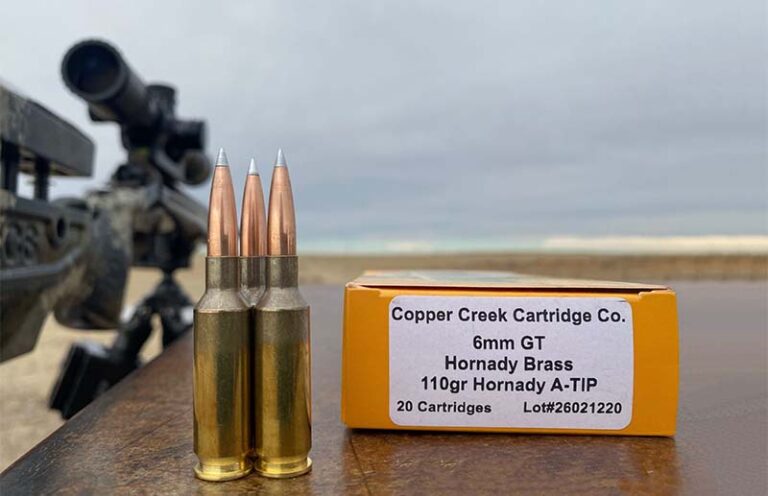
Lighter bullets result in higher velocities, and here’s how speed can improve your long-range shooting game.
Growing up, they always told me things would get smaller and lighter as we—as in society and technology—moved forward. Today, “we” see it in a variety of industries, but the shooting community has been slow to respond. There lacks a balance, and the shooting world is subject to wild swings of the pendulum in an effort to find and incorporate those modern advancements in technology.
One of the first areas we ventured into was barrels. We started wrapping steel in carbon fiber to save weight. Then, we questioned the technology to the point where people invented reasons not to use carbon-fiber barrels.
The modern carbon-fiber barrel is outstanding in every way. Yes, if you overheat it, the mirage directly in front of your magnified optic will shift the point-of-impact, but we knew this. Mirage shields aren’t new; we used mirage bands on stainless steel barrels, so when target shooting with a carbon-fiber one, it only makes sense to include it.
Packs are another area where we’re slow to follow. We like big, heavy, military-style packs; the most popular include a gun bearer feature to haul the rifle together with your gear. The problem is, they’re copying military gear from the ’80s. Modern packs weigh in the ounces versus the most popular shooting packs, which come in around 8 pounds empty. It’s that heavy Cordura we covet that adds pounds to our equipment. If you shaved 4 pounds from the pack and added 2 pounds to the rifle, the improvements made are highly noticeable. You gain performance across the board.
See what I mean? As a shooting community, we evolve … but we’re also very set in our ways.
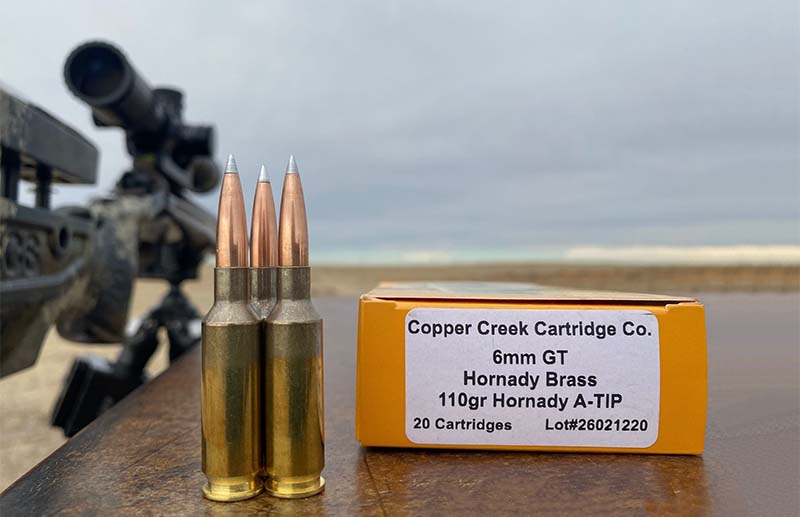
Unbalanced Bullets
All this brings to me to bullets and rifles: I believe we’re missing a balance in our choices. I see a lot of people who run immediately to too big and heavy. They want to shoot a .338 Lapua Magnum with 300-grain bullets, when the 250-grainers work so much better … and 6.5 Creedmoor will do the same job.
Now, we know rifle weight is stability, and bullet weight helps carry the round farther. That said, I still feel speed wins, and when you look at the balance between the two, regaining speed is the smarter side of the equation.
Recently, I had a real eye-opener when two cartridges for the AR platform were introduced. See, I’m a bolt-action, precision rifle guy. I do shoot a lot of large-frame ARs, which drive very differently from the smaller-frame AR-15s. Each one must be addressed from a slightly different place if you want to be successful downrange. This fact created an accuracy problem; people were doing great with an AR-15 and shooting poorly in an AR-10. It happens. I see it all the time. It’s a training issue, but training takes time to correct.
So, we want to address 600- to 800-yard targets without carrying a bigger gun or having to build a better marksman. How about a cartridge to bridge the gap?
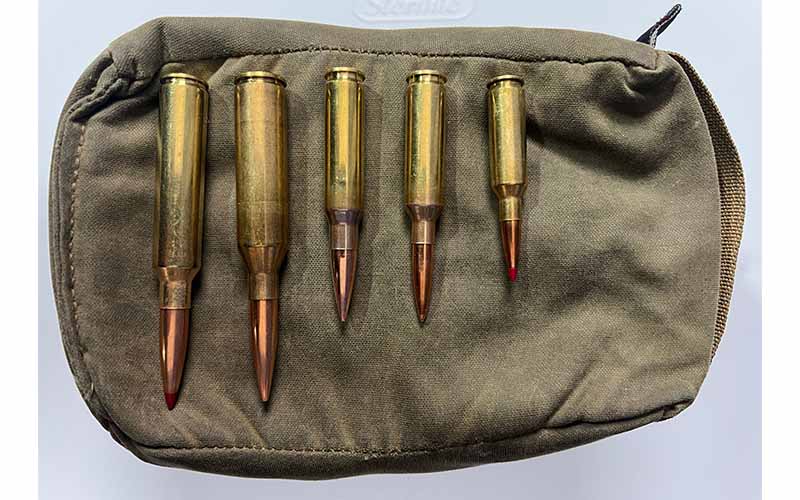
Enter the Valkyrie … or now, the 6mm ARC. I could focus on the 6.5 Creedmoor, but I want to focus on these two offerings, because we see 6mm in precision rifle competition and the Valkyrie because of the “misfire” in the release.
The 6mm Craze
The 6mm Creed is a great round; it’s fast, light, accurate and has it all but barrel life. It’s Grandpa’s .243 Winchester, only with a long-range twist-rate and huge bullet library. Guys went from the .308 Win. in precision rifle competition to the 6.5 Creedmoor, and once they fell into the 6mm world, they never looked back.
What’s its greatest advantage? Speed. Because precision rifle competitions have a speed limit of 3,200 fps, the 6mm Creedmoor—at 3,175 fps—was perfect. Except it killed barrels, had recoil and didn’t really do anything over the 6.5 Creedmoor. Enter the 6mm Dasher with less recoil; it dropped the speed from 3,175 fps to 2,850 fps. It has all the performance, less recoil and a bit more barrel life. The Dasher led to host of other 6mm cartridges, finally settling with the 6 GT.
Today, many 6mm rounds hover between 2,850 and 2,950 fps in muzzle velocity. It’s a nice balance of weight and speed. The competition crowd usually stays over 100 grains in bullet weight, topping out around 115 grains. When you combine these values, the drop and drift are outstanding. My personal load, with a 108-grain factory ammo, is 6.8 mils to 1,000 yards, which is great.
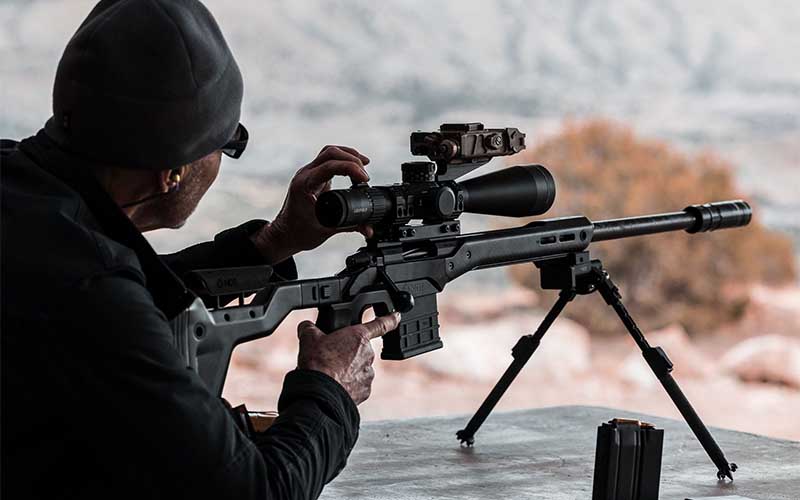
Lighter bullets offer up less recoil, and less recoil translates into better accuracy for the shooter. The marksmanship advantages come into play through recoil management. Recoil management tells the bullet where the barrel is upon release. All 6mm bullets, being light and fast, will exit the barrel quickly and with less disruption to the shooter. By adding this bullet to a small-frame AR-15, the weight and speed equations balance very nicely.
What am I really working toward by going lighter and what system is being affected by the increase in speed from reducing the bullet’s weight?
Time
The time it takes for the bullet to leave the barrel is less, so shooter actions behind the bolt are minimized. The time it takes for the bullet to reach the target is reduced, which means less drop. It also means less wind interruption. Time of flight is a major factor.
Sure, I can take a big, heavy bullet and float it like a softball in the air and absolutely hit the target repeatedly. But I’m increasing my chances of a miss from an errant wind gust—not to mention the higher the bullet goes, the more the wind increases and becomes less predictable.
The .22-Caliber Option
I have a confession to make: I love the .224 Valkyrie, but I strongly believe it “misfired” upon release. I feel like my grandchildren might never know the Valkyrie, because it might not survive. If it does, it’ll be due to sheer willpower. The bright side? The .224 Valk has reintroduced .22-caliber centerfires as a viable, long-range cartridge.
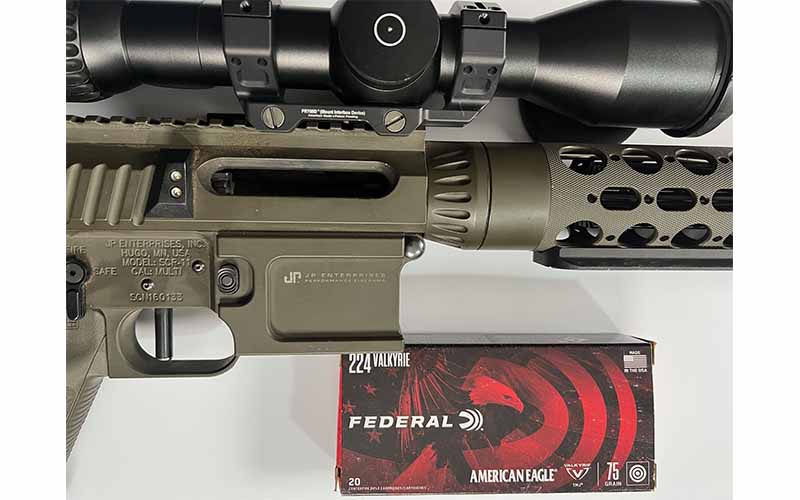
When the Valkyrie first hit the market, I got a JP SR15. Exactly one week after Hornady released 88-grain ammo for it, I shot a Guardian match and landed in the Top 15. I loved it; in my mind, it performed as advertised. Sure, spotting impacts beyond 800 yards was tough, but overall, I thought it was perfect for an entry-level precision-rifle cartridge.
These small-frame ARs with long-range cartridges had revolutionized the game. I want to own 600 to 800 yards, and if I can do it in a smaller caliber, I’m all for it. But, at those distances, consistency can be a struggle with the light factory loads. The 90-grain stuff is hit or miss in most semi-auto rifles and, while the 88-grain Hornady Ammo is working, that can be hard to find. At 400 yards, the .224 Valkyrie is a laser beam. Consistent performance to 600 yards is expected but, at 800, things can start to fall apart. The balance of weight and speed was just slightly off.
How do I balance this equation and figure out the sweet spot? A .224 Valkyrie bolt gun.
I went with a Zermatt Bighorn Origin action, one of the least expensive custom actions on the market. The Bighorn Origin has a replaceable bolt head, so it’s easy to pair it with the 6.8 bolt face.
Next is my secret weapon: a left-hand gain-twist Bartlein Barrel. Gain-twist barrels don’t care about bullet weight, the recoil pulse is better, and the speeds and pressures are exactly where they need to be. And to clarify a myth—the bullets aren’t running over the lands and grooves multiple times. It’s not putting any extra scoring the bullet.
The Bartlein gain-twist barrel let me shoot the 90-grain load from Federal at speed and to distance more accurately and effectively than through a gas gun. A box of 90-grain Federal was running 2,750 fps with single-digit SD numbers.
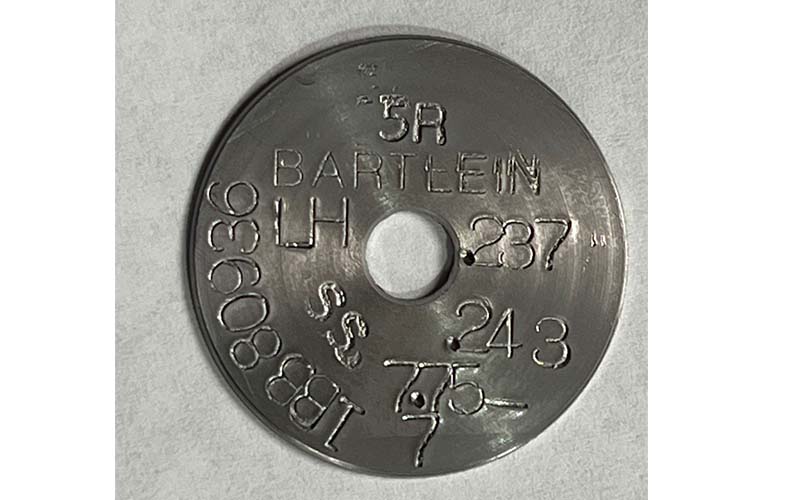
This isn’t the case of the gas gun being less effective due to movement; it seemed that the Valkyrie liked the extra speed. We know it wasn’t the 1:7 twist rate of the semi-autos that caused many of the issues: It’s the speed needed to get the performance. This same principle applies the 6mm ARC. The 6mm is a bit easier to load, but it still wants speed. If a setup is running 200- to 400-fps slower than performance would like, you can’t expect the same results.
The bolt-action rifles in. 224 Valkyrie were performing. In fact, the instructors at CR2 Shooting Solutions followed my lead and used a bolt-action version as a student rifle. With this setup, I’ve seen second-round hits in 12-mph winds at 1,200 yards, and impacts out to 1 mile.
All this points to how effective the right .22-caliber can be at long distances: There’s now a .22 Creedmoor and a .22 GT, which is very similar to a 6.5×47 necked-down .22 caliber, but with a slightly different case. And remember, the smaller bullets like speed.
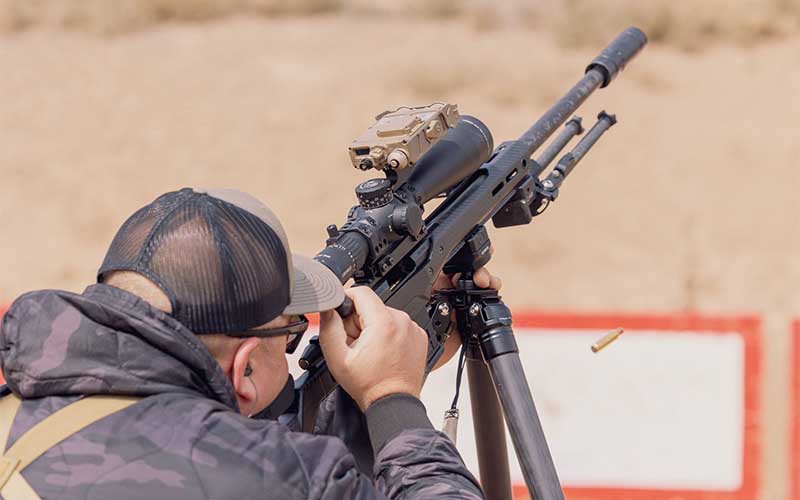
Weigh Your Options
Don’t overlook the smaller calibers and smaller bullets when trying to shoot long distance. And, when paired with ballistic software, shooters can read results quickly and move to a more effective load to increase performance.
Balancing bullet weight and speed might mean going lighter. Don’t be afraid to try it.
Editor's Note: This article originally appeared in the June 2022 issue of Gun Digest the Magazine.
More On Long-Range Shooting
- Mils vs. MOA: Which Is The Best Long-Range Language?
- Buying the Perfect Precision Scope
- Shooting Positions: Variety Is The Spice Of Life
- Riflescope Tracking: Why It’s Crucial To Test It
- Long-Range Shooting: Becoming Your Own Spotter

Next Step: Get your FREE Printable Target Pack
Enhance your shooting precision with our 62 MOA Targets, perfect for rifles and handguns. Crafted in collaboration with Storm Tactical for accuracy and versatility.
Subscribe to the Gun Digest email newsletter and get your downloadable target pack sent straight to your inbox. Stay updated with the latest firearms info in the industry.

![Best Concealed Carry Guns In 2025 [Field Tested] Wilson Combat EDC X9S 1](https://gundigest.com/wp-content/uploads/Wilson-Combat-EDC-X9S-1-324x160.jpg)


![Best 9mm Carbine: Affordable PCCs [Tested] Ruger Carbine Shooting](https://gundigest.com/wp-content/uploads/Ruger-Carbine-Shooting-100x70.jpg)
![Best AR-15: Top Options Available Today [Field Tested] Harrington and Richardson PSA XM177E2 feature](https://gundigest.com/wp-content/uploads/Harrington-and-Richardson-PSA-XM177E2-feature-100x70.jpg)
